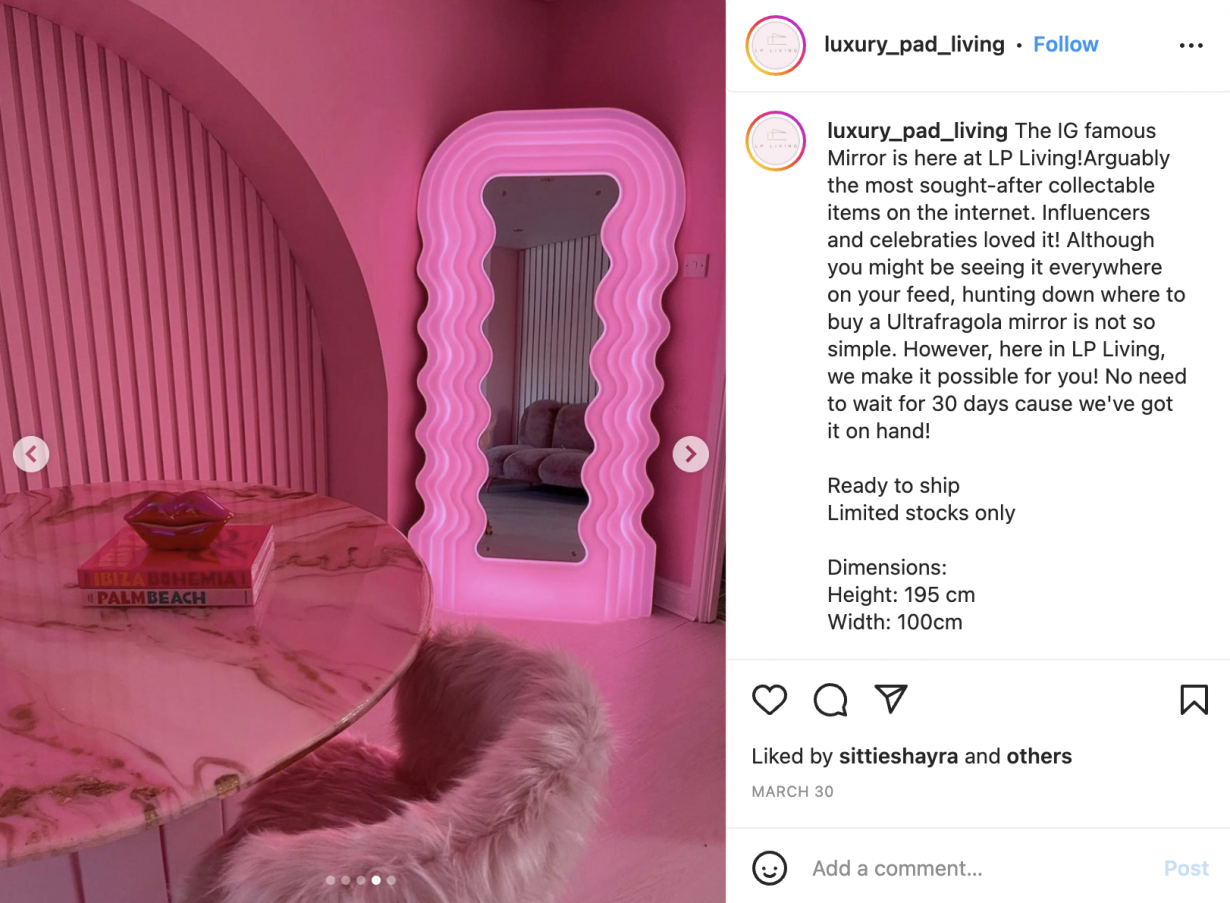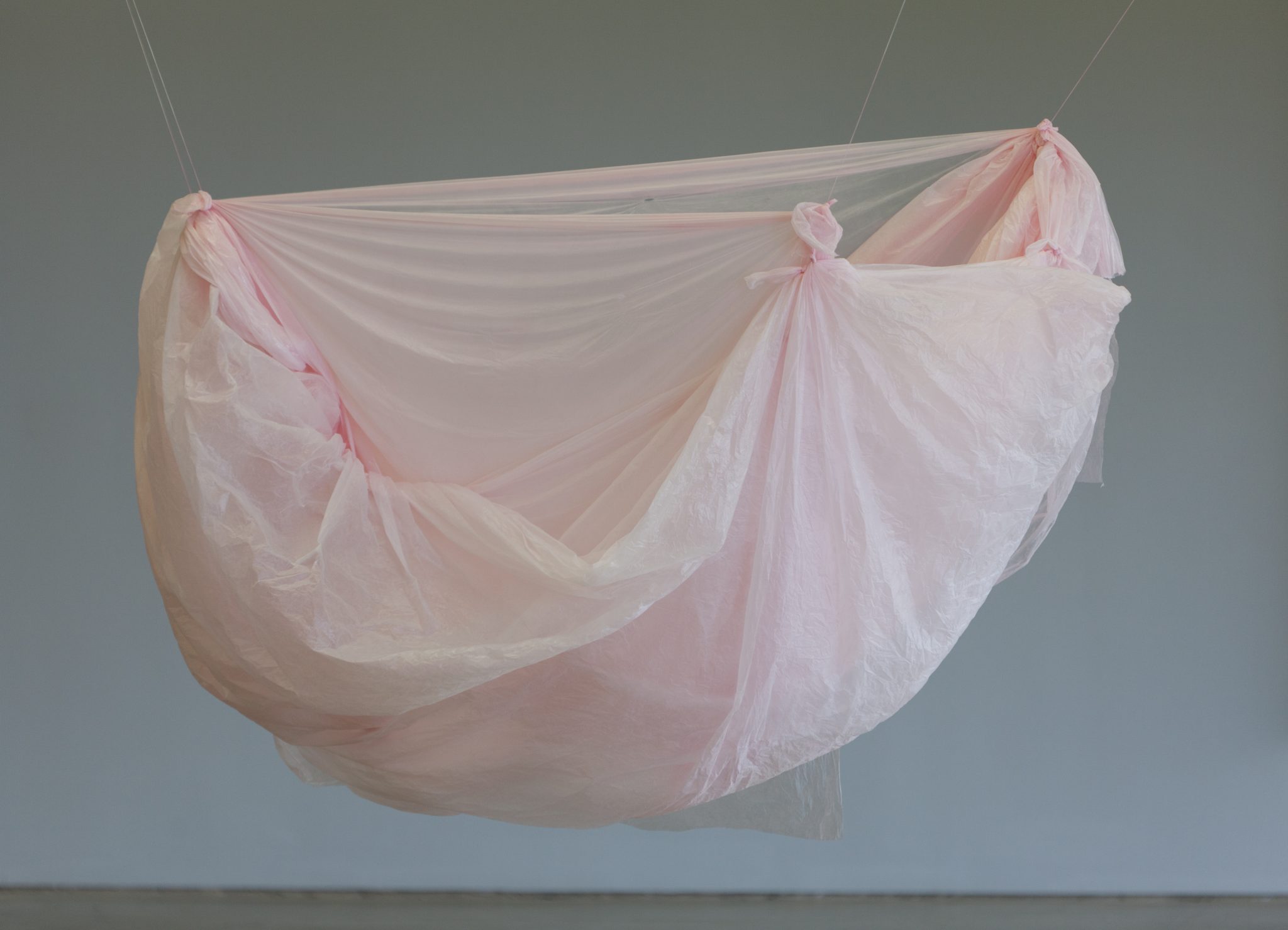Three centuries after its original incarnation, its pretty, ornate style is everywhere – from art fairs to the ‘avant basic’ aesthetic
Europe reels from a series of financial shocks. A controversial vaccine keeps a serious disease at bay. Russia invades a neighbouring nation. Those who can afford to do so escape the unrelenting grimness by indulging in pretty, pastel maximalism. This is not 2022 – it’s 1722, and the elegant whimsy of rococo art and architecture offers some respite from smallpox and stock market bubbles.
Three centuries later, and we are ripe for a return to rococo. In its original incarnation, it was a style characterised by lightness, asymmetric curves and an overabundance of natural motifs; particularly seashells and acanthus leaves. The word ‘rococo’ comes from the French ‘rocaille’, rock-like, alluding to the eighteenth-century vogue for encrusting small grottos with broken stones and seashells. It was at once charming and, literally, grotesque; a delicate nod to decay. Perhaps it’s the conscious artificiality of rococo that makes it so apposite for the present moment, a firmly tongue-in-cheek aesthetic that offers us a way to navigate our desire for pleasure in a painful world.

At this year’s Frieze London, three presentations nodded to the new mood: Karla Black at Gisela Capitain, Pablo Bronstein at Cristea Roberts and Michaela Yearwood-Dan at Marianne Boesky. An ethereal pink cloud suspended in mid-air, Black’s What To Ask Of Others (2011) immediately called to mind Fragonard’s The Swing (1767), at once joyful and melancholy in its transience. Black’s sculpture seems to reduce the rustling silken skirts of the swinging girl to a kind of formal essence; an approach also adopted by several contemporary painters, Yearwood-Dan among them. These artists are co-opting the formal gestures of rococo and translating them into a new, abstract but still recognisable visual language. Marijke Vasey has made a speciality of ‘frame paintings’, her deft brushstrokes conjuring up the suggestion of ornate scrolling borders. Hovering somewhere between figurative painting and abstraction, meanwhile, is the work of Flora Yukhnovich (also at Frieze London, with Victoria Miro), whose bold canvases provide a sense of what might happen if you typed ‘sexy Tiepolo’ into DALL-E. Given the commercial success of Yukhnovich’s work – her 2020 painting I’ll Have What She’s Having sold at auction for £2.3 million in 2021, against an estimate of £80,000 – there’s clearly an appetite for this reworked rococo.


It can’t be mere coincidence that most of the artists playing around with rococo motifs are women, and that many of them identify as queer. Even in its original form, the rococo aesthetic was coded as fundamentally feminine/effeminate, and therefore – according to the masculine values of eighteenth-century Protestant England – as suspicious, unserious and corrupt. Today, the inherent queerness of rococo has been reclaimed in a celebratory mode: take Yearwood-Dan’s work, a joyous confection of curve and colour that incorporates lush natural motifs to underscore the naturalness of queer desire. Matt Smith, whose studio practice focuses on ceramics and tapestry, has developed an aesthetic framework of queerness which derives from rococo decorative art; a framework expressed through deconstructed porcelain figurines festooned with pearls. Bronstein’s new work, meanwhile, shows us what Disney’s Beauty and the Beast might have looked like if it had been animated by Piranesi; a series of monstrous, phallic objets d’art dominating architectural landscapes. The Wallace Collection, the essential museum of rococo art, recently held a small exhibition looking at the influence of the style on Disney films – high camp, indeed.


It’s interesting to note both Bronstein and Black incorporate mirrors into their works: Black’s are unframed and dabbed with pink and peach paint, while Bronstein places a smashed one in the centre of Dressing Table, Lisbon Earthquake (2019), an image tense with arrested motion, imagining the destruction wrought by the 1755 earthquake which devastated Lisbon. After all, mirrors and windows were key to the rococo interior, for the aesthetic lightness of the style required an abundance of actual light to best enliven it. This sense of lightness also translates into something more atmospheric: the idea that all this beauty is illusory, and that what we see is all style, no substance. Looking beyond the confines of the artworld, it’s not surprising to note that one of the biggest design revivals of recent times has been the Ultrafragola mirror, designed by Ettore Sottsass in 1970 but appearing in the background of numerous Instagram influencer shots in recent years. This in turn has become a key feature of the so-called ‘avant basic’ aesthetic, perhaps the true heir to rococo, all candy colours and wavy lines. The pink, undulating frame of the Ultrafragola drapes the viewer’s reflection in a warm glow of self-regard, as if Madame de Pompadour were once again sat at her dressing table in Versailles – all the better to admire oneself in a rococo-inspired fit direct from the runway. Perhaps one of Simone Rocha’s frothy, beribboned gowns, a richly-encrusted Gucci look, or even a Watteau-pleat dress courtesy of Sandy Liang’s current collection. Ribbons and seashells galore. Rococo is back, baby.
